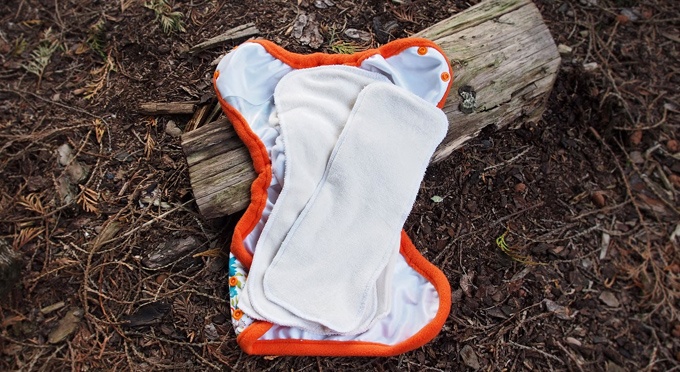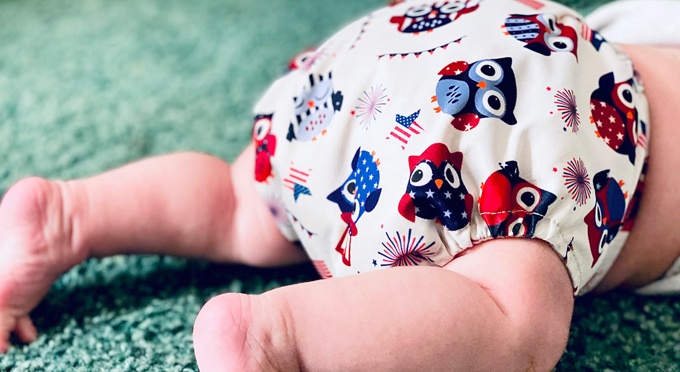
In an age of increasing environmental consciousness and financial prudence, parents are finding that a simple yet impactful choice can address both concerns—switching to cloth diapers. This natural and economical alternative not only reduces waste but also saves families a significant amount of money over time. In this article, we’ll explore the benefits of cloth diapers, emphasizing their eco-friendly attributes and demonstrating the substantial cost savings they offer through a practical cost comparison.
The Natural Choice: Cloth Diapers
Choosing cloth diapers is a return to the basics, aligning with nature and sustainability. Unlike their disposable counterparts, cloth diapers are reusable and typically made from natural materials like cotton, hemp, or bamboo. This means fewer chemicals coming into contact with your baby’s delicate skin, reducing the risk of skin irritations and allergies.
Furthermore, the eco-friendly nature of cloth diapers extends to their environmental impact. Disposable diapers can take centuries to decompose in landfills, contributing significantly to our waste problem. Cloth diapers, on the other hand, can be used for years and are often repurposed for younger siblings or even sold second-hand, reducing their environmental footprint.
Saving Money with Cloth Diapers: A Realistic Comparison
One of the most compelling reasons to switch to cloth diapers is the substantial cost savings they offer over disposable diapers. Let’s break down the numbers with a practical cost comparison.
Disposable Diapers:
- On average, a newborn goes through about 10 to 12 disposable diapers per day.
- The cost of disposable diapers varies but is approximately $0.20 to $0.30 per diaper.
- For one year, you could spend between $730 to $1,095 on disposable diapers for a single child.
Over the course of the typical diapering age range (birth to 2.5 years), the expense can add up to a staggering $1,825 to $2,737 per child. For families with multiple children, the financial burden is even more significant.
Cloth Diapers:
- A set of cloth diapers can range in price but averages around $300 to $500, including diaper covers, inserts, and accessories.
- Cloth diapers are reusable, making them a one-time purchase.
- Washing cloth diapers at home or using a diaper service may cost around $20 to $30 per month.
When we compare these numbers, it becomes clear that cloth diapers offer substantial cost savings. Even when factoring in the costs of washing, families can potentially save around $1,325 to $2,407 per child during the diapering years.
Additional Cost Savings Benefits:
- Cloth diapers can be used for subsequent children, amplifying savings.
- Reselling cloth diapers or passing them on to another family further reduces the initial investment.
- Cloth diapering reduces the need for frequent grocery store trips for disposable diapers.
Embracing Cloth Diapers: A Win-Win Choice
Switching to cloth diapers is a natural and eco-friendly choice that not only benefits the environment but also eases the financial strain on families. By opting for cloth diapers, parents can embrace sustainable living while saving a substantial amount of money over the diapering years. This decision reflects not only a practical choice but also a commitment to a healthier, more cost-effective, and eco-conscious parenting journey—one that truly aligns with nature and savings.

What Are Cloth Diapers Exactly?
Cloth diapers are reusable diapering systems made from fabric materials designed to be worn by infants and toddlers. Unlike disposable diapers, which are single-use and thrown away after each diaper change, cloth diapers can be washed and reused, making them an eco-friendly and cost-effective alternative. Cloth diapers come in various styles, but they all consist of a few basic components:
- Outer Shell or Cover: This is the waterproof or water-resistant layer of the cloth diaper. It helps prevent leaks and keeps moisture contained within the diaper.
- Absorbent Inserts or Liners: These are the inner layers of the cloth diaper that absorb and hold urine. They can be made of natural fibers like cotton, hemp, or bamboo, or synthetic materials like microfiber.
- Inner Lining or Pocket: Some cloth diapers have a soft inner lining that comes in contact with the baby’s skin. In pocket-style diapers, this lining forms a pocket where you insert the absorbent inserts.
- Fasteners or Closures: Cloth diapers use various fasteners to secure them around the baby’s waist. Common options include snaps, Velcro (hook-and-loop), or pins (less common).
- Leg Gathers or Elastic: Elasticized leg openings help create a snug fit and prevent leaks.
How To Use Them
Here’s a general guide on how to use cloth diapers:
1. Prepping Cloth Diapers
- Before using cloth diapers for the first time, wash them according to the manufacturer’s instructions. This helps remove any residues and ensures maximum absorbency.
2. Preparing the Inserts
- If you’re using a pocket-style diaper, insert the absorbent liner or pad into the pocket. If you’re using a diaper cover with separate inserts, place the inserts in the cover.
3. Changing the Baby
- When it’s time for a diaper change, remove the soiled cloth diaper and set it aside.
- Wipe the baby’s bottom clean with a cloth wipe or disposable wipe if preferred.
4. Putting on a Cloth Diaper
- Lay the clean, unfolded cloth diaper flat on a changing surface.
- Place the baby on the diaper with their bottom centered on the diaper.
- Bring the front of the diaper up between the baby’s legs to cover their bottom.
- Fasten the diaper using the chosen closure method, whether it’s snaps, Velcro, or pins. Ensure a snug but not overly tight fit to prevent leaks.
- Ensure that the leg gathers are gently but securely hugging the baby’s thighs to prevent leaks.
5. Checking for Comfort and Fit
- Ensure that the diaper is comfortable and doesn’t pinch or chafe the baby’s skin.
- Adjust the fit as needed.
6. Reusing or Storing Cloth Diapers
- If the cloth diaper is only wet, you can remove the inserts, if separate, and reuse the cover after wiping it clean if necessary.
- If the cloth diaper is soiled, remove the inserts and store the diaper in a designated diaper pail or wet bag until it’s time for laundry.
7. Laundering Cloth Diapers
- Follow the manufacturer’s instructions for laundering cloth diapers. Typically, this involves a cold rinse cycle followed by a hot wash cycle with an appropriate detergent.
- Avoid using fabric softeners and bleach, as they can reduce diaper absorbency and damage the fabric.
- Line-dry or machine-dry the diapers as recommended to maintain their condition.
By following these steps, parents can successfully use cloth diapers as a sustainable and cost-effective alternative to disposable diapers. The key to successful cloth diapering is maintaining a consistent laundering routine and ensuring a proper fit to prevent leaks.
Additional Tips
You can save a lot of money by using cloth diapers instead of disposables, but you can also spend a lot more if you’re not careful. If you’re looking for more environmentally friendly, less toxic ways to diaper without breaking the bank, here are some ways you can do it.
- Use Prefolds and Diaper Covers: Prefolds are the least expensive type of cloth diapers available and you can get good, quality diaper covers without spending a lot, either.
- Make Your Own: Spend even less money if you have sewing skills. Make your own prefolds cloth diapers and save even more.
- Buy One-Size Diapers: One-size diapers are generally designed to fit from around 8 to 12 pounds up to around 25 to 35 pounds and are meant to be used from soon after birth to right up to potty training.
- Use a Clothesline: Sunning diapers can help take out stains, and save you money at the same time. Reduce energy costs by drying naturally outside.
- Buy Used: There are lots of places you can buy used cloth diapers over the internet and this is a great way to save some money, but make sure to get them from a reliable source, and wash them thoroughly before use.
- Read Reviews: Browse through sites that house cloth diaper reviews before you purchase. This is a good way to get an idea of whether or not a certain style diaper might work for you.
Tried Cloth Diapers? Got Your Own Tips? If you’ve tried cloth diapers and you are for or against them, use the comments section below to share your experience. If you have tips for saving money or using them, please share those below as well.